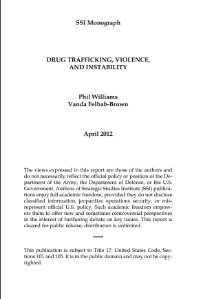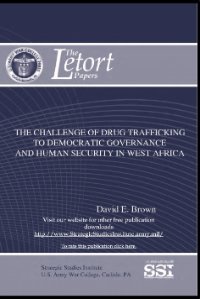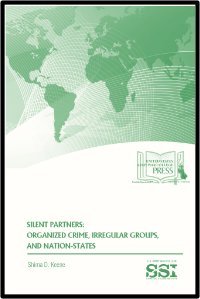By Radha Barooah and Ana Paula Oliveira Siria Gastélum Félix
This brief aims to bring specific local perspectives to the broader global policymaking agenda, and is intended to inform government officials and policymakers, as well as civil society groups working in this field.
EXECUTIVE SUMMARY People from all walks of life have disappeared during Mexico’s so-called ‘war on drugs’; many others become victims of the growing global human trafficking industry; migrants go missing as they travel to seek a better life elsewhere, often displaced by criminal groups. Vulnerable youth, particularly young boys, are co-opted by criminal interests and then ‘disappeared’ to forcibly join gangs, often groomed to provide gang ‘muscle’ or traffic drugs.1 Women and children are often trafficked for sexual exploitation and forced labour.2 Many activists, journalists, politicians and whistle-blowers who campaign against organized crime or corruption have disappeared. Disappearances – as we define the phenomenon in this paper – are deployed for various reasons: to silence the voices of social and political leaders, activists and journalists; to assert violent control over criminal territories and illicit markets; or to monetize vulnerable people as a tradeable commodity. In all these cases, criminal groups have a hand, and although organized crime-related disappearances vary in motive and scope, they disproportionately affect the most marginalized communities. Criminal groups therefore instrumentalize disappearances for different objectives. But a fundamental challenge of dealing with this widespread problem is that cases are rarely differentiated and often assumed by law enforcement authorities to be one-off isolated incidents. However, when examining this issue closely, there is a more menacing pattern behind them, namely that they are often perpetrated by organized criminal groups operating in a particular community or controlling a market territory. By not discerning this broader picture of underlying criminal intent, by focusing on the what and ignoring the why, the phenomenon tends to receive limited attention in public policy agendas. There is also inadequate institutional support and investigative work, which has the effect of impeding victims’ access to justice. The international framework designed to address enforced disappearances – the International Convention for Protection of All Persons from Enforced Disappearances (ICPPED)3 – requires that state involvement in the act (in the form of collusion, authorization or acquiescence) is proven in order to trigger its obligations. Compounding this, the conditions of state involvement and the role of organized crime actors are not clearly set out in the wording of the convention, so cases of disappearances linked to illicit economies tend to be confined to the margins of national and international agendas. Meanwhile, the international human rights discourse on disappearances perpetrated by non-state actors (e.g. criminal groups or networks) has progressed to a certain degree, but it, too, remains ill-equipped to determine the conditions and factors of collusion between organized crime and state actors that would amount to authorization, acquiescence or omission. These imprecisions and gaps in the legal framework result in a general lack of institutional support for victims and their families. Despite this, individuals and communities affected by this crime have developed mechanisms to respond. Since 2019, the Global Initiative Against Transnational Organized Crime (GI-TOC), through its Resilience Fund, has supported over 50 community-based initiatives and activists searching for people who have disappeared, including relatives seeking justice and journalists investigating disappearances related to organized crime around the world.4 The Resilience Fund has documented first-hand experiences through interviews and dialogues and provided financial and capacity-building support.5 This brief draws from the work and perspectives of such civil society and community members who live in environments that are exposed to disappearances. It assesses this form of organized crime as a serious human rights violation. While informed by the global dynamics of this criminal market, it focuses on contexts in which disappearances occur in Latin America, analyzing in particular the cases of Mexico and Venezuela. The first setting examines how criminal groups strategically deploy disappearances to fulfill various objectives; the other considers how disappearances occur in the mining sector, which experiences a high prevalence of criminality. This policy brief therefore aims to bring these specific local perspectives to the broader global policymaking agenda, and is intended to inform government officials and policymakers, as well as civil society groups working in this field. While some of the evidence in the brief is anecdotal, the authors have corroborated it with open-source data and a literature review. The analysis is exploratory and is designed to add to a small yet growing body of literature on disappearances among vulnerable communities exposed to organized crime and amplify understanding of the pressing nature of the problem in policy circles.
Geneva, SWIT: Global Initiative Against Transnational Organized Crime. 2024. 28p.





















